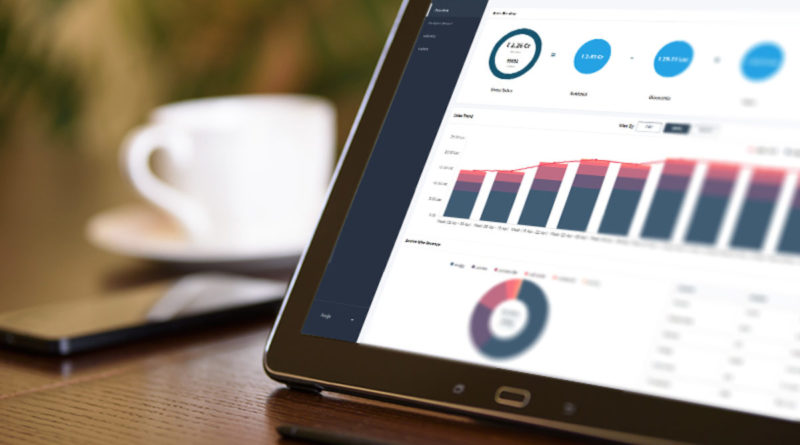What Your POS System Analytics Can Tell You about Your Restaurant
We’ll start by answering this question directly – everything you need to know. This includes, but is not limited to the following:
- More detailed reports
- Inventory management and control
- Customer relationship management (CRM)
- Improved accuracy
- Marketing tools
- Loyalty programs
- Omni-channel capabilities
POS system analytics offer a wealth of insight and data. You’re creating data every time your staff swipes a card, enters an order, or closes a check. While separate pieces of data don’t tell you much, there is an amazing story to be told when you combine it. What are you doing with that information?
What is Restaurant Analytics?
Let’s answer another frequently asked question. Restaurant analytics are what you get when all that information is combined. It’s turned into bite-sized insights that help you make more informed business decisions. Today, it’s possible to gather, measure, and present every piece of information in a way that’s clear. This prompts a response in real-time and forward-thinking plans.
Reduce Food Loss
Your analytics can allow you to control the stock going in and out of your kitchen. This increases staff accountability in terms of how they cook, account for, and deliver every item ordered. After all, it’s your restaurant’s inventory. You should tolerate employees overpiling plates or cutting a regular short just because “he’ll come back anyway.”
Better Table Turnover
You’ll need to move the dining experience along with at your tables in order to serve customers well and hopefully create repeat ones. Your POS system analytics can help make ordering easier and even offer tabletop payment. This way, customers will leave satisfied and likely to return for another meal at one point.
What is more, your servers can accommodate more customers with faster order and payment. This makes table turnover even better without unnecessarily rushing guests who want to linger a little longer.
Right-size Your Staffing Needs
It’s great to know who your best and worse servers are. While intuition is intuition, your decisions should be based on data. Look deeper and find out the exact cost of a poor employee on your business.
Your restaurant analytics will be able to indicate where losses occur if you always have the same number of servers and kitchen staff throughout the week, but only certain nights require extra servers. Then, you’ll know how to utilize their manpower better.
Reduce Comps and Discounts
You might think that several comp percentage points aren’t very much, but margins tend to shrink due to that. Monitor dishes and staff easily with restaurant analytics to find out what is really going on. There’s no way there were 30 birthday parties at the restaurant last night!
Supervise Server Performance
Your POS system’s analytics can help you identify strong servers, improve staff training, and schedule smarter. It can also help you discover strengths and weaknesses. Pair the best servers with servers who have low bottle numbers so the former’s talent will rub off on the latter. On that note, pair the best servers with VIPs. Identify your best servers so you use them when a reservation for a VIP guest comes in.
Make Menus Smarter
Through menu insights, it’s possible to obtain a better grasp of what is or isn’t performing well and how to make your menu more profitable.
Your POS data can show you which items have customers returning. Do you sell a lot of grilled chicken sandwiches to people who never return? Maybe analytics can explain why. It’s also possibly the case that one of your lower-selling products may have some unlocked potential. Your restaurant analytics will convey if one of these items generates a higher-than-average percent of returning customers Training staff to promote them, highlighting these items on the menu, and updating its name or description might improve its turnover and create more repeat visitors.
There may not be a failsafe approach to predict restaurant success, but few reasons for unnecessary losses or expenses remain given the amount of data coming from your restaurant POS. In fact, the answers are right at your fingertips.
Better Marketing
One of your biggest fortes to fill seats is strong digital marketing. Campaigns become strong when you tailor them to individual preferences and when you are able to see the successes and failures. Whether it’s something sporadic like a Father’s Day Prix four menu or a weekly Friday special, tracking a campaign within your POS analytics will let you see if your efforts are coming to fruition by comparing sales data or failing to bring in more business. Your analytics will tell you you’re wasting your time. Switch up your strategy if that’s the case.
Don’t forget that marketing efforts continue after the customer walks through the door. Use your POS analytics to make regular guests happy with a free aperitif or a complimentary glass of their favourite wine. Simple gestures like remembering what dish someone likes or their name go a long way too.
Track Purchasing Behavior
It’s easy to track purchasing behaviours if the POS system integrates with a customer relationship management (CRM) portal. Restaurants can be sure that customers will find what they were looking for when they come in. Studies show that regulars spend two-thirds more than first-time customers when they return.
Track Customer Loyalty
Customer loyalty is important because your loyal clientele can keep your operation up and running in the offseason months. This is much better than closing down for the summer, for instance. Customer loyalty can also help your restaurant survive a dry spell when money is barely trickling in, but purveyors frown at the perspective of giving you more than a few days of credit.
You never lose a happy customer. Even someone who never comes again because they’ve moved out of state or abroad might bring you, new customers. They won’t lose touch with the people in their old neighbourhood and they will recommend your place. They might recommend it to dozens of people from all over the state and even other countries.


